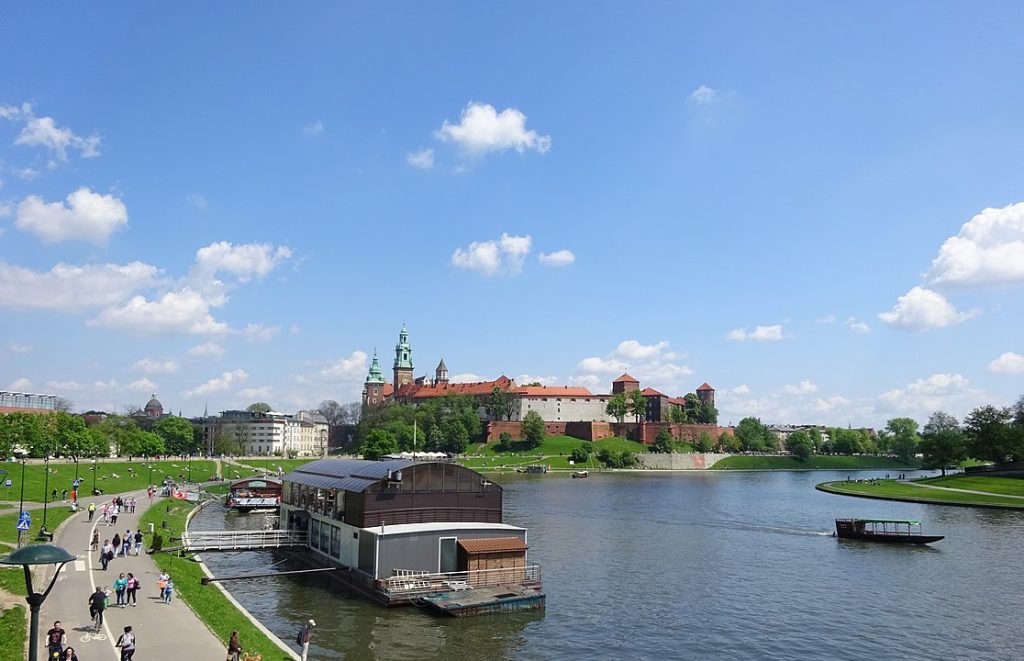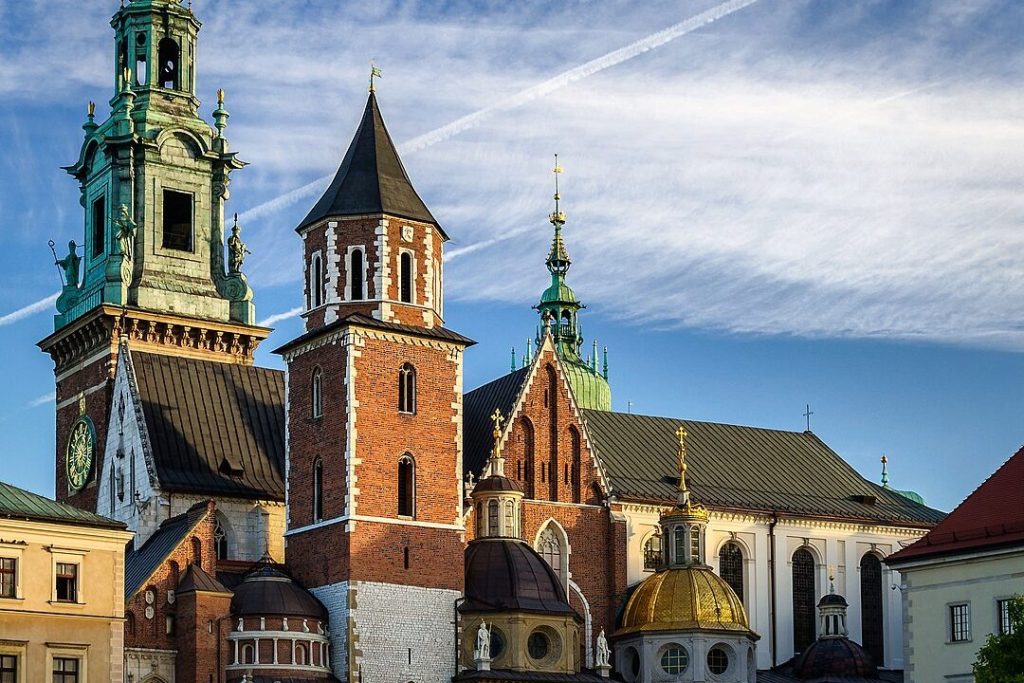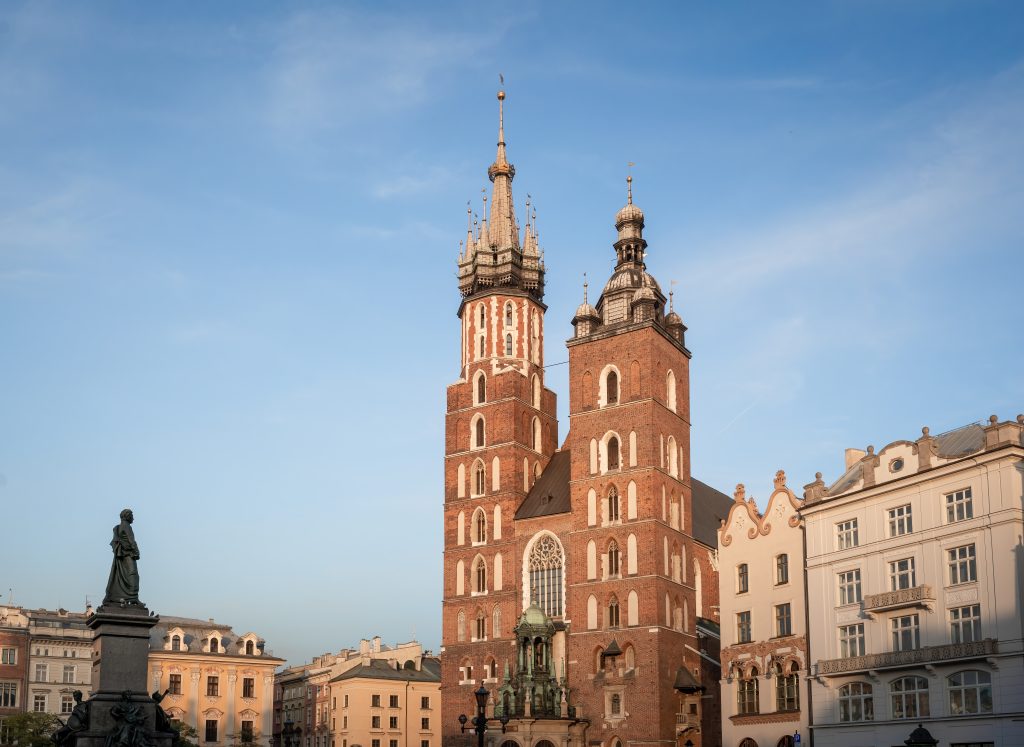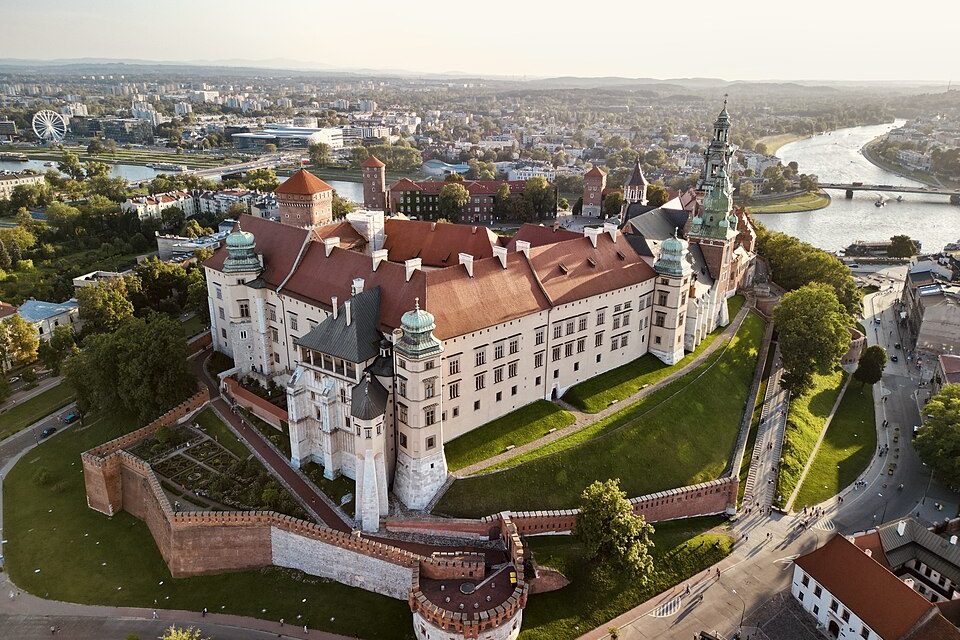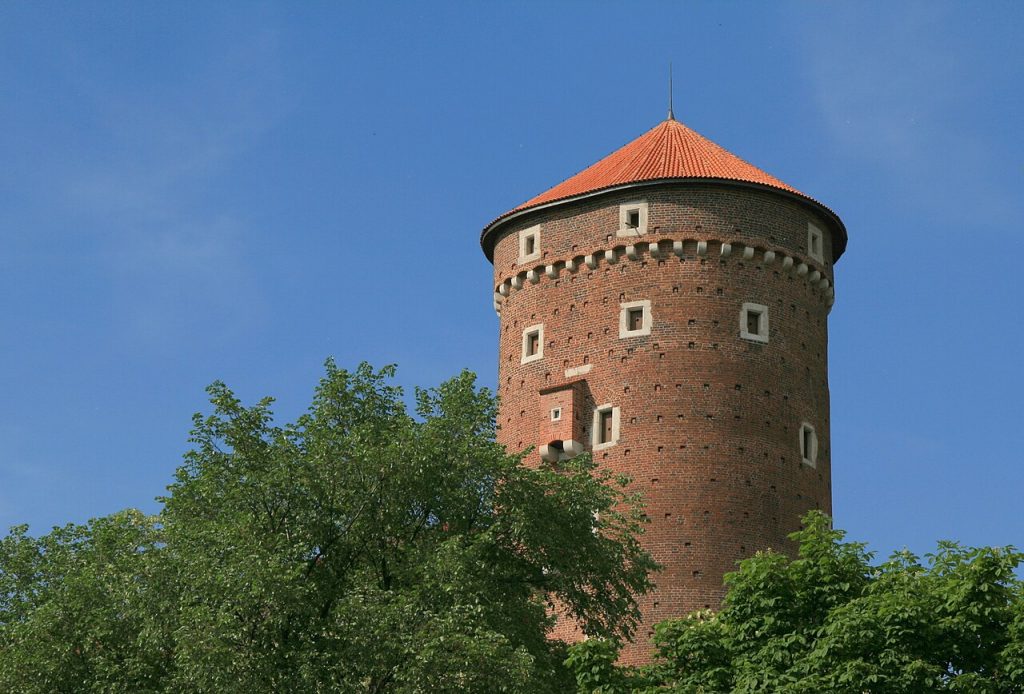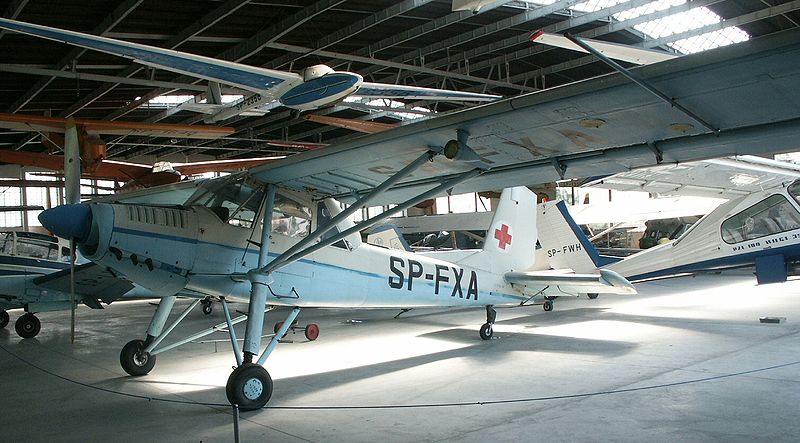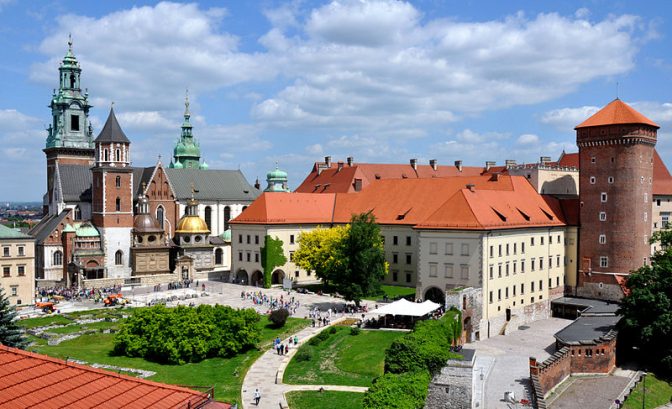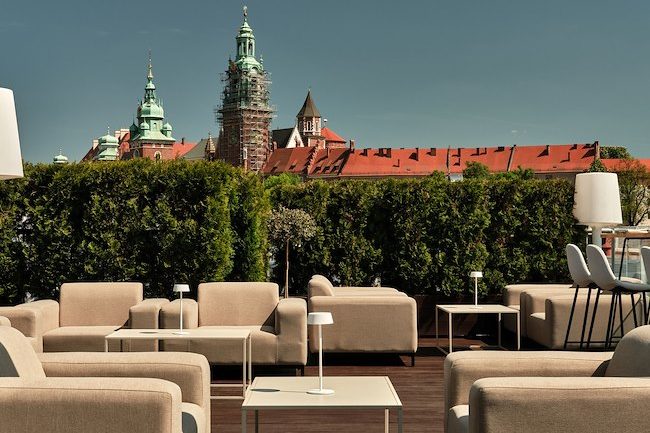- 1️⃣ Introduction - Kazimierz as the heart of Jewish Krakow
- 2️⃣ A brief history of the Kazimierz district
- 3️⃣ Two markets of Kazimierz - Wolnica Square and Szeroka Street
- 4️⃣ Kazimierz Synagogues - spiritual and cultural legacy
- 5️⃣ Monuments and memorials related to Jewish history
- 6️⃣ Kazimierz culinary - Jewish and Polish cuisine in harmony
- 7️⃣ Kazimierz by night - art, music and atmosphere of old Kraków
1️⃣ Introduction - Kazimierz as the heart of Jewish Krakow
🌟 Are you planning to visit Krakow?
👉 Check out 15 attractions that delight every tourist
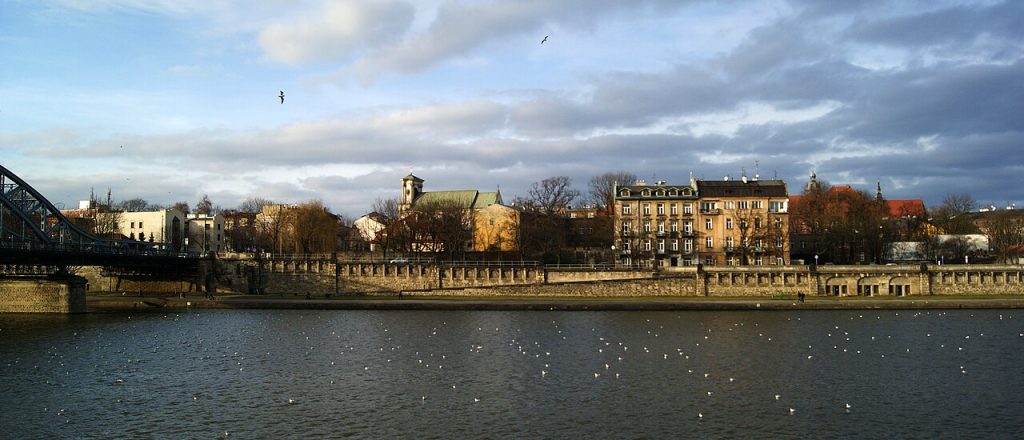
Kazimierz is one of the most distinctive districts of Krakow - a place where the past and present They meet at every turn. For centuries it has been center of Jewish life in Poland, providing not only living space, but also The cultural and religious heart of the Jewish community.
Walking around his cobbled streets, you can still feel the spirit of the old days - the smell fresh bagels, view old synagogues and sounds klezmer music in the background create an unusual atmosphere.
Although Kazimierz has undergone many changes-from splendor of the pre-war, by tragedy of the Holocaust, up to postwar oblivion - today is regaining its importance as a a place of memory, dialogue and meetings. It is here Jewish Krakow's history still alive - in the walls of the townhouses, in the markets and in the hearts of people visiting this unique place.
2️⃣ A brief history of the Kazimierz district
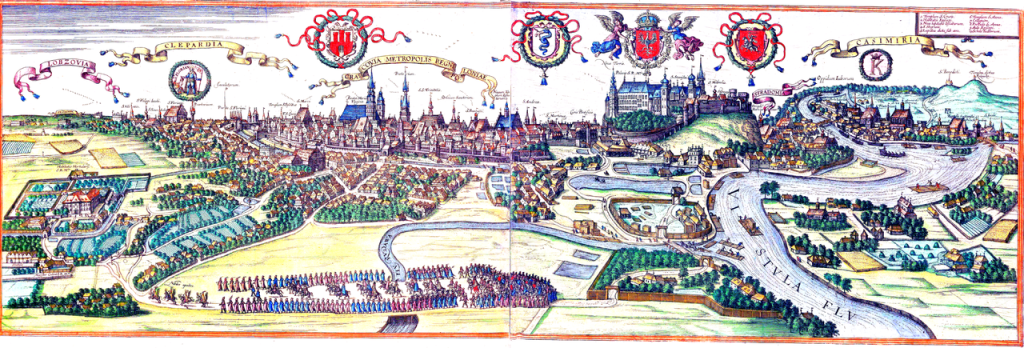
Kazimierz was not always part of Krakow - for several centuries it functioned as a independent city, established in 1335 by Casimir the Great. Located on the banks of the Vistula River, it was intended to support trade and commerce, and its own marketplace and city hall emphasized its independence.
💠 A space for the Jewish community
In the 15th century, King Jan Olbracht ordered the relocation of Jews from Krakow to a separate part of Kazimierz. This is how the Oppidum Judaeorum - Jewish city with autonomy, synagogues, schools and courts. It soon became one of the The most important centers of Jewish life in Europe.
💠 A golden age and a time to forget
The 16th and 17th centuries were the heyday - Kazimierz was a symbol of the multiculturalism and coexistence of the Jewish and Christian communities. Over time, however, the district's importance began to wane. W 1800 Kazimierz was incorporated into Krakow, and its former glory gradually faded.
💠 War and revival
During World War II, the Jewish community was expelled and murdered, and the district became deserted. It was not until the 1990s that Kazimierz began to revive - thanks to the Jewish Culture Festival, the restoration of synagogues and the influx of artists.
Today this place memory, art and life, where history constantly speaks from the walls and cobblestone streets.
3️⃣ Two markets of Kazimierz - Wolnica Square and Szeroka Street
📯 Not only the bugle call and the altar of Wit Stwosz
👉 Discover the fascinating history, legends and hidden details of St. Mary's Church
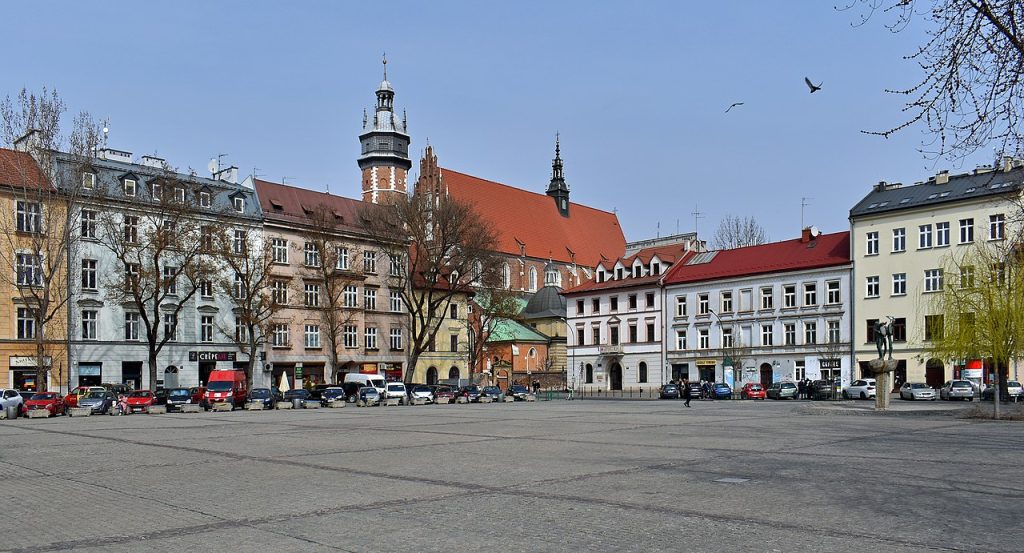
Casimir had two hearts for centuries - Wolnica Square, which is the official city market, and Broad Street, which served as an informal center of Jewish community life. Both places were important, both lived their own rhythm - and both today remind us of the district's multicultural heritage.
💠 Wolnica Square - the former town square of Kazimierz
Wolnica Square, known as Kazimierz Square, was once a the center of a separate city - A place for trade fairs, meetings and decisions. It was here that it beat The economic and social heart of Kazimierz, surrounded by the town hall, townhouses and numerous stalls.
In the Middle Ages, it rivalled in importance even the Main Market Square in Cracow - there were held here grain, meat and fish markets. The Kazimier Town Hall, parts of which have survived to this day, was the seat of the city government. The cobblestones of the square bustled with life every day.
With time - after Kazimierz was incorporated into Krakow in 1800 - the development of the square has slowed down, and the city hall was partially demolished. For decades, the square served purely utilitarian functions - including as a vegetable market or... parking lot.
Today Wolnica Square is slowly regaining its former character. W The renovated town hall houses the Ethnographic Museum, and in the summer it hosts concerts and fairs. Although less grand than Krakow's main square, the place has its own charm -. rough, nostalgic, real.
💠 Szeroka Street - the market square of the Jewish Kazimierz district
Of a completely different nature is Szeroka Street - formally a street, but in appearance and function resembling a square. This is where the life of the Jewish community was concentrated: there are Old Synagogue, Remuh, Popper, houses of worship, restaurants and memorials.
Wide was the religious, cultural and commercial center - A place of prayers, fairs, meetings and neighborhood conversations. Today, it is still a living symbol of Jewish Kazimierz - concerts, festivals, communal Shabbat dinners and cultural events are held here.
Walking along Szeroka Street, you can feel the ghost of the past - subtle, but present in the tenements, the walls of the synagogues and the sound of klezmer music coming from the interiors of the restaurants.
4️⃣ Kazimierz Synagogues - spiritual and cultural legacy
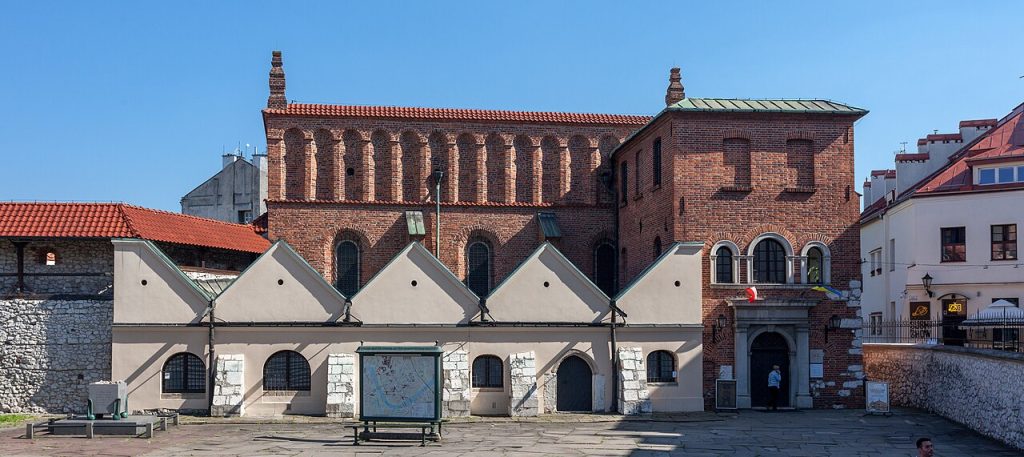
Kazimierz is a place where the religious life of the Jewish community flourished for centuries. Evidence of this presence are synagogues - former houses of prayer, learning and meeting, which still tell the story of the power of tradition and spirituality.
💠 The Old Synagogue - a silent witness to history
The oldest and best known is Old Synagogue on Szeroka Street - built in the 15th century in Gothic style, later rebuilt in the spirit of the Renaissance. It was here that the religious life of the district was concentrated, where sermons were preached and holidays celebrated. Today it houses branch of the Krakow Museum, dedicated to the history and culture of the Jews.
💠 Remuh Synagogue - the heart of Hasidic tradition
Just a few steps away is the Remuh Synagogue, the smallest but exceptionally important - related to the figure of Rabbi Moses Isserles (Remuh), one of the most prominent Jewish scholars. Next to it is the Remuh cemetery, one of the oldest Jewish cemeteries in Poland, where pilgrims from all over the world still come.
💠 Synagogues full of history and art
More synagogues have survived in Kazimierz, each with its own atmosphere:
- Isaac Synagogue - With its impressive Baroque architecture and mystical atmosphere,
- Tempel Synagogue - Moorish style, today used for concerts and events,
- Pile, High, Popper - smaller, but full of details and stories about the old days.
💠 Faith, memory and culture
Although many of these synagogues do not have religious functions today, they are still a living part of Kazimierz's landscape - As museums, concert venues and meeting places. They are a reminder of the heritage that has stood the test of time and the The spirit of the neighborhood did not die, but quietly waited for its return.
5️⃣ Monuments and memorials related to Jewish history
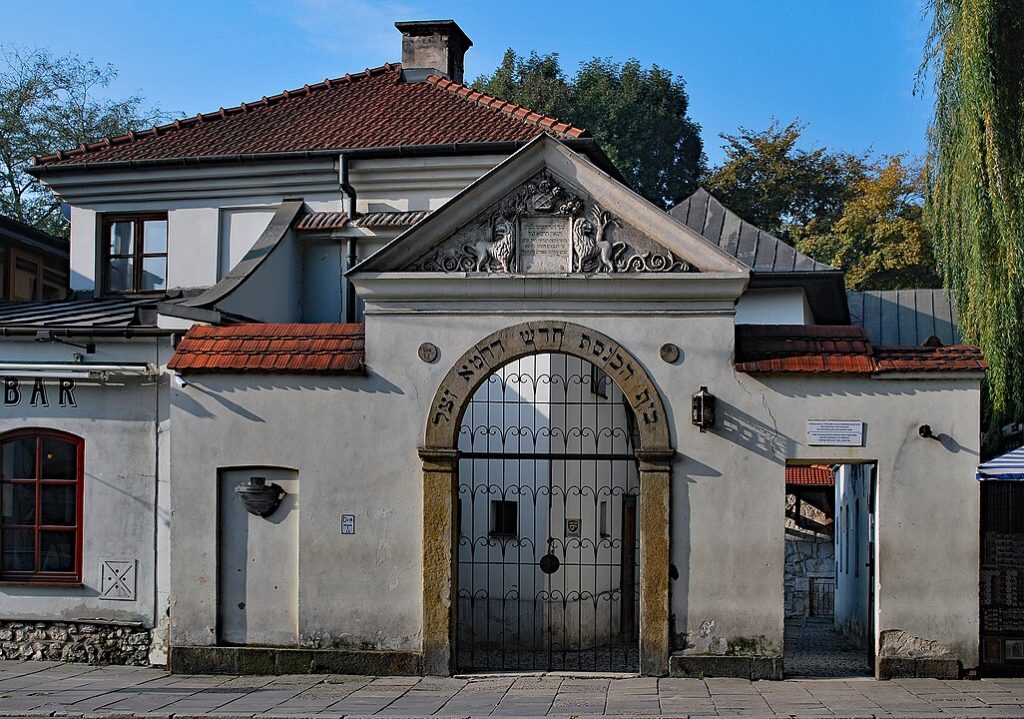
Kazimierz is a district that remembers more than it shows at first glance. Hidden among the narrow streets and old tenements are places that remind us of the daily life, spirituality, tragedy and hope of the thousands of Jews who for centuries made up this unique place.
💠 Remuh cemetery - the holy land of Kazimierz
This small, walled Jewish cemetery from the 16th century is one of the most important memorials in all of Poland. Among others, Rabbi Moses Isserles (Remuh) rests here, and it has become a tradition to leave stones and prayers at his matzeva. The old, moss-covered tombstones form a unusual atmosphere of concentration and history.
💠 Szeroka Street - a symbol of Jewish life
It was here that the life of the Jewish community was concentrated - at the Broad Street There are the most important synagogues, houses of prayer and former inns. Today it is a representative place for walks and festivals, but at the same time living archive, where almost every building has a story.
💠 Souvenirs of the tragedy of war
In and around Kazimierz we find traces of the times of the Holocaust - Memorial plaques, monuments, fragments of walls. One of the moving places is Joseph Street, where there is a symbolic installation with the inscription "Memory" and photographs of former residents.
Also worth a look is the nearby Ghetto Heroes Square in Podgórze - it was there that the Cracow ghetto was located, and today there is a set of installation with empty chairs, symbolizing the absentees.
💠 Tenements, details, traces
You can still see on the facades of the houses Hebrew subtitles, mezuzah niches, Star of David ornaments. Some of the buildings have been renovated, others retain their raw, authentic appearance - together they form a The narrative of a city whose memory has not perished.
6️⃣ Kazimierz culinary - Jewish and Polish cuisine in harmony

Kazimierz is not only history and architecture - it is also a tastes and smells, which create the unique atmosphere of the neighborhood. The old Jewish cuisine mixes here with modern Polish, vegetarian and artistic cuisine - creating a place where food becomes part of the cultural experience.
💠 The smell of bagels and onions
There is often a smell on the street corner warm bagels, baked according to traditional recipes. Many establishments also serve onions, kugels, chulent and other dishes that once reigned on the tables of Kazimier families. It is worth stopping by the food trucks at New Square, where Jewish cuisine meets modern interpretations.
💠 The iconic casserole from the Roundhouse
Although it does not come from Jewish tradition, it cannot be overlooked the iconic casserole from the New Square, known throughout Krakow. It is a must stop not only for tourists, but also for local residents - especially at night.
💠 Restaurants with soul and history
Kazimierz has no shortage of atmospheric pubs and restaurants that combine the atmosphere of the old neighborhood with a modern approach to cuisine. Many of them offer classic Jewish dishes - gefilte fish, goose pipa or sweet raisin cheesecake - often in artistic settings with klezmer music in the background.
💠 Wine, hummus and street food
Today, Kazimierz is also a meeting place for young Cracovians and tourists. It serves Israeli, Middle Eastern, fusion and vege cuisine. Local wine bars, hummus bars and kraft pubs make up the a vibrant culinary landscape, which changes with the time of day.
7️⃣ Kazimierz by night - art, music and atmosphere of old Kraków
When the sun goes down, Kazimierz does not fall asleep - on the contrary. At night, the district comes alive again, showing its other, more intimate and artistic face. It's a place where history mixes with the sound of live music, and cobblestone streets lead to hidden clubs, galleries and cafes with atmosphere.
💠 Klezmer music in a live version
In the evenings in many venues you can listen to the klezmer music played live - Violin, accordion, clarinet and drums transport listeners back in time. Some restaurants, like the legendary Ariel whether Klezmer Hois, offer not only dinner, but also a concert with soul.
💠 Soulful bars and cellars full of secrets
Kazimierz is famous for atmospheric bars - Many of them are located in old basements or townhouses with an unobvious entrance. Lamps, old furniture, brick walls and artistic disorder create an atmosphere that cannot be faked. It's the perfect place to nightly conversations over wine or kraft beer.
💠 Art on walls and in yards
After dark, it's also worth looking into backyards and alleys - that's where you'll find the street art, light installations and niche galleries. Kazimierz has been attracting artists for years, who leave their traces here - on walls, signs, and sometimes in the windows of forgotten stores.
💠 An atmosphere that cannot be forgotten
What attracts most to Kazimierz at night is the following. unique atmosphere - A little melancholy, a little cinematic, always authentic. Somewhere music plays, somewhere the smell of coffee or cinnamon wafts, and people sit on steps and benches, soaking up the night life of a neighborhood that has never lost its soul.
8️⃣ Events and festivals - contemporary cultural life of the district
🧒 Cracow with children? That's a great idea!
👉 Here are 10 attractions that the little ones will love
Kazimierz is not only a memorial - it is also a living cultural scene, where history is intertwined with modernity. Throughout the year there are events that attract people from all over the world - from klezmer concerts, to open-air cinema, to the largest Jewish cultural festivals in Europe.
💠 Jewish Culture Festival - the heart of Kazimierz in the summer
This is the festival, held since 1988, revived the spirit of Casimir. Every year in late June and early July, the district transforms into a lively space full of concerts, workshops, lectures and communal prayers. The culmination is a concert Shalom on Szeroka Street, which gathers thousands of participants outdoors.
💠 Joseph Street celebration and local initiatives
In the autumn, the Joseph Street Festival - A neighborhood initiative that brings together residents, artists and tourists. On the agenda: exhibitions, film screenings, guided walks and concerts. This is an ideal opportunity to feel Kazimierz "from the inside", through the eyes of those who live here every day.
💠 Art, cinema and theater in non-obvious places
In Kazimierz, culture is not confined within the walls of institutions. Film screenings are held in the courtyards of tenement houses, concerts - in the basements of pubs, and performances - in spaces adapted from old warehouses or mikvahs. It is here that the Mikro cinema, Barakah Theatre or independent galleries - spaces full of emotion and experimentation.
💠 Kazimierz all year round
Regardless of the season, Kazimierz lives with its own rhythm - you will always find here something to discover: an open-air exhibition, a jazz concert, a poetry slam or a crafts workshop. This is a neighborhood that inspires and draws you in - not only with its history, but also with its the creative energy of today.
9️⃣ Walking around Kazimierz - what is worth seeing?
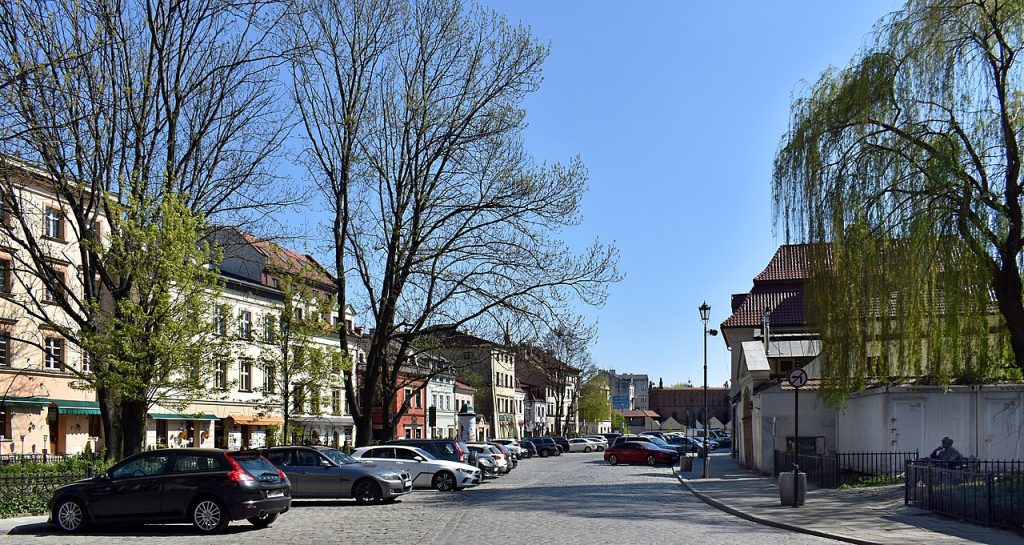
Kazimierz is a district made for exploring on foot. Narrow streets, cobblestone squares, hidden courtyards and facades with history - every step leads to a new discovery. These are not just places to "tick off," but more importantly a space worth feeling.
💠 Szeroka Street - the heart of the district
It is here that the central pulse of Kazimierz beats. Surrounded by synagogues and atmospheric restaurants, Szeroka Street It resembles a square rather than a typical street. Here you will find the Old Synagogue, the Remuh Synagogue, a monument to Holocaust victims and cafes where time has stopped.
💠 New Square and Roundhouse
Here everyday life mixes with legend. During the day there is a vegetable and flea market, and in the evening the square turns into a nightlife center. In the middle stands the iconic Roundhouse - formerly a market hall, today a mecca for casseroles and street food.
💠 Hidden courtyards and murals
Kazimierz is also a not-so-obvious place - peeking into the gates and courtyards, you can find yourself in the Murals, sculptures, traces of ancient inscriptions, wooden staircases and inconspicuous galleries. Many of these nooks and crannies you won't find in guidebooks - and that's where the true soul of the district lies.
💠 Synagogues and cemeteries
During the walk, it is impossible to miss the other synagogues - Isaac, Kupa, High - each with its own history and unique atmosphere. And a few steps away - the Remuh Cemetery, one of the most moving places in Krakow.
💠 The Vistula side of Kazimierz
Walking south, you should reach the Vistula boulevards and the Bernatka Footbridges, which connects Kazimierz with Podgórze. On its railings lovers hang padlocks, and a walk at sunset gives a completely different perspective on the city.
🔟 Summary - a legacy that still lives on
Kazimierz is much more than just another tourist attraction on the map of Krakow. It is a neighborhood with soul, where every street, wall and cobblestone alley tells a story - about centuries of cultural coexistence, the pain of loss and the beauty of rebirth.
It is a place that has stood the test of time, where tragedy did not supplant memory, and memory did not stop development. Today Kazimierz is bustling with life - full of galleries, music, flavors, memories and new beginnings. Synagogues still stand, cemeteries attract pilgrims, and in the New Square you can eat a casserole while listening to jazz or klezmer tunes.
Walking around Kazimierz, you not only learn about the history of -. you become part of it. It is here, more than anywhere else in Krakow, that you feel that the The past and present live side by side. No pathos, no staging - simply, truthfully.
📍 Attractions in the area
🔗 Articles similar in subject matter
🔥 Most popular articles in the last week
❓ Frequently asked questions
Of course, Kazimierz abounds in great places where you can enjoy both Jewish and Polish cuisine. I recommend the restaurant Ariel, which serves authentic Jewish dishes and Klezmer Hois, where you can experience the magical atmosphere of yesteryear.
It is also worth visiting the local Chajim Kohan, serving dishes inspired by the traditions of both cultures. Each of these restaurants offers not only delicious food, but also a unique journey back in time through Krakow's Kazimierz.

